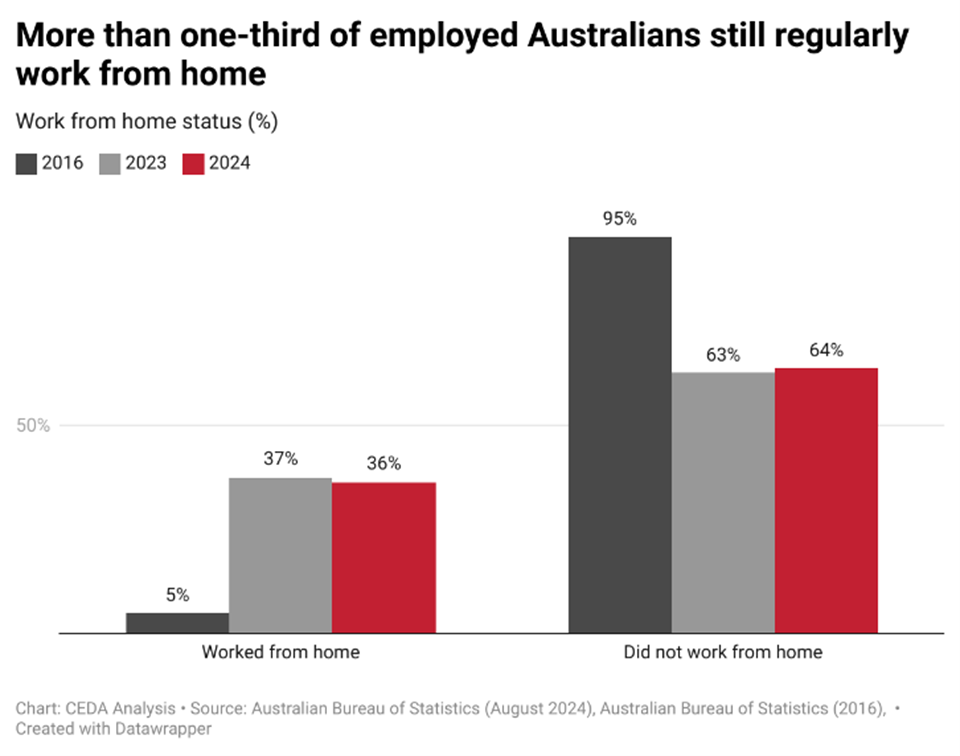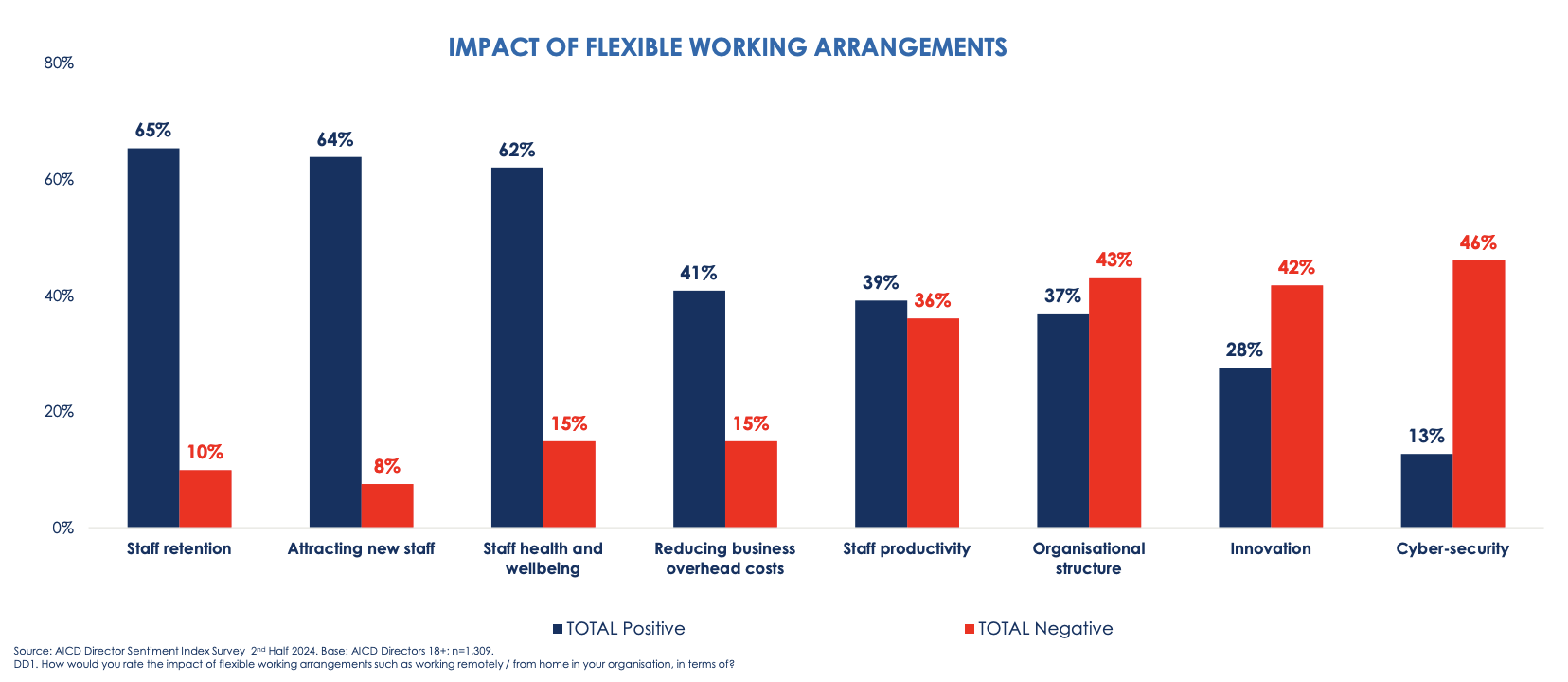
But benefit at risk amid growing wave of office-return policies

Employers across Australia are enjoying a bigger talent pool thanks to work from home arrangements, according to a think tank.
Analysis from the Committee for Economic Development of Australia (CEDA) revealed that WFH helped various groups overcome barriers in participating in the labour market. This includes women with young children, who saw a nine percentage point rise between 2019 and 2023 in workforce participation for jobs where they could work remotely.
This is also the case for people with disabilities or health conditions, who saw a 4.4-percentage-point increase in workforce participation for roles that allow work from home.
"Our results show employers now have access to a broader talent pool and potentially better skills matches thanks to these new ways of working," the CEDA analysis reads.
"It also suggests the growth of WFH could be contributing to our historically high labour force participation rate and low unemployment."
CEDA said employers shouldn't lose sight of these benefits amid growing office-return policies in Australia.
The latest data from the Australian Bureau of Statistics showed that only 36% of Australians are still regularly working from home as of August 2024, slightly down from the 37% in 2023.

This comes as more employers in Australia mandate office return policies, including Tabcorp and the New South Wales government.
Data from Robert Half also revealed that 39% of employees are now expected to come to the office five days a week in 2024, much higher than the 19% in 2023.
The share of employees also asked to come to the office three days a week has also declined to 17%, down from 26% in 2023.
The rise in full office-return policies comes as Australian leaders express concern over productivity and organisational structure amid the implementation of flexible working arrangements.
Data from the Australian Institute of Company Directors found that at least a third of leaders believe flexible work can negatively impact productivity (36%) and organisational structure (43%).

There is also rising pressure on the government to bring employees back onsite amid rising office vacancy rates in central business districts.
In Melbourne CBD, data from the Property Council of Australia showed that office vacancy is at 18%, which is much higher than the average of 13.7%.
Cath Evans, Property Council of Australia Victorian Executive Director, said it shows the Victorian government needs to get public servants back to the office to ensure a vibrant CBD.
"While flexible working is a feature of many top organisations, nothing beats regular in-office contact for team building, mentoring, skills growth and productivity," Evans said in a statement. "We are seeing a global trend among governments to support working in the office, and we encourage the Victorian Government to adopt a similar push."
Andrew Brushfield, Director at Robert Half, stressed that not all employees will be pleased with the shift away from remote and hybrid work.
"Mandated office days can be a double-edged sword for workers. While they foster collaboration and connection, they can also lead to resentment and disengagement if not implemented and justified thoughtfully," Brushfield warned in a statement.
Another report from Robert Half revealed that remote work remains in the top three preference of 19% of Australian employees in 2025. Flexible working hours is also on the top three for 38% of Australians.
According to the findings, 41% of Australians will address their concerns with their manager if they don't get what they want this year.
More than a quarter also said they will actively look for a new job (28%) or passively look for one, including attending informational interviews (37%).
"Beyond salary, workers are looking for benefits that support their overall wellbeing, such as enhanced healthcare, mental health support, and flexible work arrangements," said Nicole Gorton, director at Robert Half, in a statement.
"Employers will need to keep up with changing times and employee interests and respond appropriately to hold on to their workers."